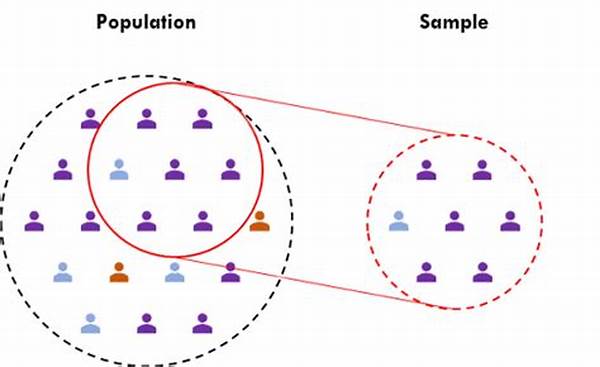H1: Ensuring Neutrality in Data Sampling
Data sampling is the cornerstone of modern analytics, driving decisions from marketing strategies to policy-making. Imagine a world where every decision is based on skewed data leading to unreliable conclusions. Sounds like a recipe for chaos, right? This is why ensuring neutrality in data sampling is crucial. But what exactly is neutrality in data sampling? Neutrality ensures that every element of the population has an equal chance of being represented in the sample, thereby providing a more accurate representation of the whole. In other words, neutrality helps eliminate biases, giving us insights grounded in reality. At its core, it’s about fairness and accuracy, making the resulting data reliable and insightful.
The problem of bias in data sampling often arises from unintentional human error, selective data collection, and systemic biases. When businesses, academic researchers, or policymakers rely on biased data, the outcomes can be disastrous. A biased sample can lead not only to incorrect interpretations but also to misguided actions that might heavily affect real lives and businesses. With the increasing importance of data in decision-making processes, ensuring neutrality isn’t just an option—it’s a necessity. Exploring how to maintain neutrality can unveil powerful strategies to enhance data accuracy, bolster credibility, and drive more successful outcomes.
The importance of ensuring neutrality in data sampling resonates across various industries. From healthcare to finance, ensuring that data samples accurately represent a population can directly affect outcomes. It’s not just a technical hurdle but a transformative opportunity. Remember that campaign you launched that didn’t yield expected results? Maybe it wasn’t the strategy that was flawed, but the data guiding it. By ensuring neutrality in data sampling, we could potentially avoid such pitfalls. Stay tuned for a deep dive into how to achieve this neutrality, empowering you with the tools you need for unparalleled data accuracy.
H2: Techniques to Achieve Neutrality in Data Sampling
Achieving neutrality isn’t a mere checkbox in the data sampling process—it’s an ongoing affair demanding diligence and insight. Here, randomness becomes your best friend. Implementing random sampling methods reduces bias automatically by ensuring each participant or data point is selected entirely by chance. However, randomness alone isn’t a panacea. It needs to be supported by a solid understanding of the population being studied. Stratified sampling, for instance, can enhance neutrality by ensuring representation across various subgroups within the population. The aim is to mimic the population as closely as possible within the sample, making conclusions drawn much more applicable across the board.
Beyond methods, vigilance is crucial. Continuously reviewing and refining sampling techniques ensures they evolve in line with societal changes and technological advancements. This ongoing process bolsters confidence in data-driven decisions, aligning them with the true wants and needs of the population. Embracing technology can further assist, with algorithmic approaches providing a more precise selection process free from human biases. With these techniques, the dream of achieving true neutrality in data sampling becomes a practical reality, ready to transform how we interpret the world around us.
—[Content Structure Example]H2: Understanding the Imperative of Neutral Data
In the digital age, data isn’t just a support tool—it’s the bedrock of innovation and advancement. Imagine launching a revolutionary product only for it to fail due to biases in initial data assessments. Not ensuring neutrality in data sampling becomes costly not just in monetary terms but also in innovation stifling. Ensuring neutrality in data sampling isn’t just about accuracy; it’s a game-changer in decision-making processes across domains. As more businesses embrace data-centric models, ensuring every sample collected reflects the true nature of the population becomes essential.
Figures tell a clear story: nearly 37% of failed marketing campaigns trace their failures to inaccuracies in the sampled data. This highlights the pivotal role of neutrality in data sampling for achieving business success. With digital transformations accelerating, businesses must be proactive, ensuring data sampling practices are robust and foolproof against biases. Relying on technology and sophisticated algorithms paves the way, but understanding the intricacies of human behavior remains indispensable.
Amid the sprawling activity of data-driven decision-making, ensuring neutrality offers clarity. Consider it the North Star for precision, guiding decision-makers through a landscape rife with possibilities and pitfalls. By anchoring sampling processes in neutrality, organizations arm themselves with insights that are both actionable and reliable. Modern-day evidence shows that organizations prioritizing neutrality witness remarkable improvements in strategy development, customer satisfaction, and ultimately, market positioning.
H3: Practical Approaches to Neutrality
Neutrality isn’t merely theoretical—it’s a practical endeavor. Start by embracing random sampling as the default approach, sidelining biases inherent in other methods. For more complex scenarios, stratified sampling brings depth, ensuring every demographic layer is adequately represented. Pair these methods with technological interventions to further refine accuracy. Yet, the practice requires eyes wide open—continuous review and adjustment based on active monitoring of results seal the deal.
Neglecting neutrality skews insights, often leading to mismatched strategies. As companies evolve, they must imbibe ensuring neutrality in data sampling as a non-negotiable aspect of operations. With a strategic blend of proven methodologies and emerging technologies, achieving neutrality elevates insights to heights previously thought unattainable.
Ensuring Neutrality in Data Sampling: Discussion Points
Conclusion
Ensuring neutrality in data sampling isn’t merely a technical pursuit; it’s a commitment to integrity. By weaving together best practices, engaging technologies, and strategic insights, it’s possible to turn neutral data sampling from a goal into an achievement. The spotlight shines brighter than ever on neutral data as a pillar for credible analytics, reminding us that the journey of mastering it enriches the landscape of knowledge and decision-making far beyond what we imagine today.

